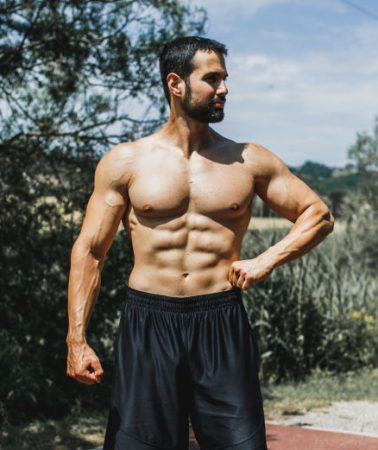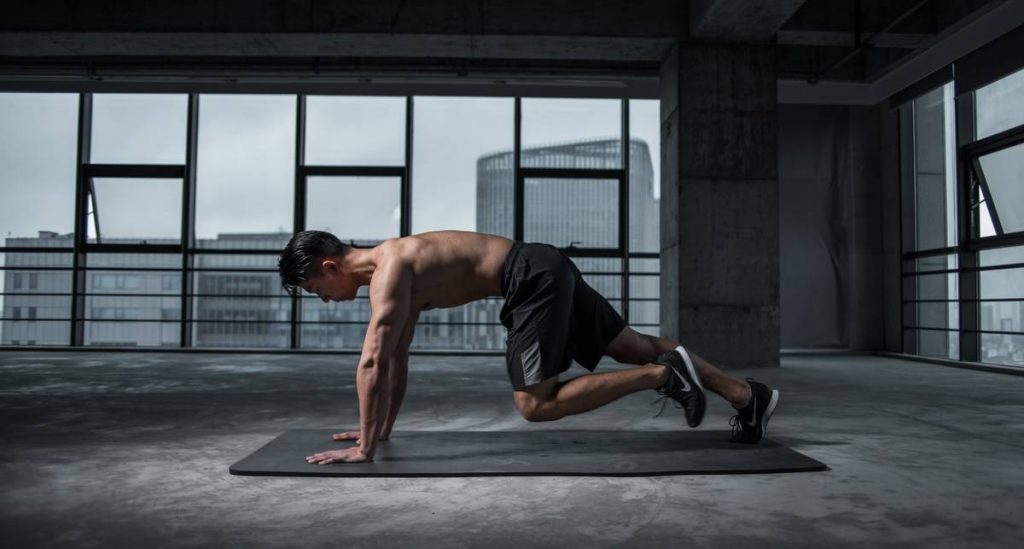BAD MORPHOLOGY FOR SECTORS, MY SOLUTIONS
The poor morphology of the pectoral muscles is undoubtedly one of the reasons for their underdevelopment in many practitioners. In truth, this is mostly a story about morpho-anatomy .
This way, we can theoretically continue to do what needs to be done so that our nurses (for example, here) develop that nothing will happen. The situation will get worse and worse, overly accepting the shoulders and triceps in comparison.
What exactly is happening, and above all, what are the possible solutions to catch up and avoid muscle retention? Is it spoiled for spoiled? Let me explain everything about poor breast morphology.
Bad example
Kevin Levrone is a 1990-2000 bodybuilding champion who trained without considering his poor chest build. As a result, he tore one of his two pectoral muscles after a bench press in 1991 that never helped him take first place in the prestigious competition that Monsieur Olympia holds. His training is a good example of what not to do if you don’t have the correct morpho-anatomy for the chest.

Determining the wrong morphology for breastfeeding
If you have been bodybuilding for a while, you know that many practitioners, including yourself, may have problems getting their pectoral muscles.
The problem is primarily related to poor morpho-anatomy, which does not predispose to getting them to work on exercises that should do it.
Indeed, you should know that it is impossible to isolate the pectoral muscles of the shoulder muscles, namely the deltoid muscles. (However, you can do this against the triceps by doing break exercises.) In each of the exercises we practice, there is a competition of muscle recruitment between the different muscles involved, called agonist muscles. In most cases, only one of them wins (there are always exceptions, but this is rare) .That is why, depending on your morpho-anatomy, that is, on the length of bones and muscles , some muscles will take priority over others … Here we are talking, in particular, about the length of your arms (in particular, the forearms), which will determine how far your elbows will drop when the barbell touches the pectoral muscles, as well as the length of your pectoral muscles, deltoids (especially the front bundle) and triceps .
Incorrect morphology is fairly easy to identify for nursing infants. This is what I personally call the morpho-anatomy of the “gorilla” or grasshopper (you can find my morpho-anatomical codifications here in detail), namely the long arms associated with a rather flat chest, all emphasized by the length of the triceps and deltoid muscles, sharpened by compared to pectorals (Look at the photo of Aurelien above, this is a “gorilla”).
Thus, your morpho-anatomy determines the conditions and difficulties that you will encounter in training, as well as what you will need to do to reduce its impact on muscle development, i.e. . choose good exercises for you, not for your neighbor.
If you keep trying to do the best exercises for your neighbor, who has the correct morpho-anatomy for the pectoral muscles, obviously this may not work for you, no matter how many reps, how often or the series number. p>
Correct morpho-anatomy for thoracic

And vice versa, good morpho-anatomy for the pectoral muscles is characterized by what is shown in the photo:
- long and large pectoral muscles on the chest. We see that in proportion they descend “low” to the bust.
- Relatively short deltoid processes, especially the anterior fascicle.
- Short triceps, which, unfortunately, may be difficult for some people to photograph, but which are clearly visible in the “pose” of the triceps.
However, this is not yet the ideal morphology of the pectoral muscles, because I have very long forearms, but this is compensated by the fact that I have a “developed” chest in adolescence thanks to endurance sports and that I have good chest mobility (which can be worked at any age, as opposed to the thickness of the chest, which consolidates around 25 years).
A ideal morpho-anatomy for the pectoral muscles would therefore have forearms that could be “measured” in part in span.
For your information, wingspan 2m07, size 1m94. The short arms in their sets would correspond to a wingspan below 1m90 relative to me, less than my height.
This will prevent my arms from dropping parallel to the ground when I do the bench press, and the movement will be somewhat partial to the “base”, which could result in more strength (put harder on the uneven bars), but also reduce the risk of injury by gaining more muscle.
This is morpho-anatomical, which I call a dinosaur (you can see what corresponds to it here).
Solutions to combat bad morphology for nursing infants
With morpho-anatomical analysis, we can quickly what to do to develop a specific muscle, especially in relation to the pectoral muscles. Here are 3 essential tips that you should follow if you are a “Gorilla” or “Grasshopper” according to my codification of morpho-anatomical analysis:
1 – You should decrease the amplitude of all bench press exercises, no longer dropping, that is, until you touch your breasts with each rep. For example, stop when your arms are parallel to the floor below. Thus, shoulder stretching will be reduced, as well as their participation in development (Stretching promotes muscle recruitment).
2- Do not neglect stretching exercises (we avoid triceps work), in particular with the pulley, also reducing the amplitude of the stretch and , increasing the contraction of the pectoral muscles with each repeat, doing, for example, 1 “isometric rupture while the pectoral muscles are shortened to the maximum permitted by the exercise. (The pulley allows you to tense throughout the range of motion that dumbbells do not.)
– Finally, prioritize the week by avoiding anterior deltoid work ( more frontal elevations and designed for the shoulders), and also neglecting triceps workout to be able to focus on the pectoralis do not feel tiredness of these agonist muscles (participants in the movements of the pectoral muscles).
In most cases, this should be enough so you can better find the rib cages for all of your exercises. As in this, age finally caught up with me, and I felt that the thickness of the chest was no longer enough to compensate for the length of my arm: You should know thatThe problems regarding its morpho-anatomy get worse as we progress as we put on more weight.
This is what happened to me when, from the moment I exceeded 110 kg in a series of bench presses, I faced every day after a session for several days in the presence of bad pains ( see this article for more information).
After my changes and adaptations, which I just advised you, they are nothing more than an old story that ultimately, without any doubt, will prove (this already takes place visually 3 months after these changes were made during writing this article.

Sample bodybuilding program for those with poor chest morphology
Here is a example program for those with poor body shape for nursing. One of the best drugs for athletes to order Cytomel online . It is obvious that needs to be adapted , especially in terms of the choice of exercises (and their methods), as well as in terms of the number of sets and reps depending on your level and strategy, the progress you want to use.
This can be done once or twice a week depending on your level, the higher it is, the lower the training frequency can be.
| Program for people with
poor chest muscle morphology |
|
| Joint mobilization | 5 minutes |
| Designed Rejected | 4 sets of 8-12 reps |
| dumbbell bench press | 4 sets of 8-12 reps |
| Distance between pulleys opposite | 3 sets of 15-20 reps |
This is the program that I fully demonstrate in this video of my training:
Conclusion on thoracic morpho-anatomy
If you do not have the correct morpho-anatomy for the pectoral muscles, it is obvious that you will never develop your pectoral muscles, as well as a person who has the correct morpho-anatomy.
Regardless, this does not prevent us from doing our best that we can minimize the imbalance. With the right exercises and the right advice, we can get much more than we think, my students have been demonstrating this to me almost every day since 2006. I hope I’ve helped you better understand the topic of poor pectoral morphology.

